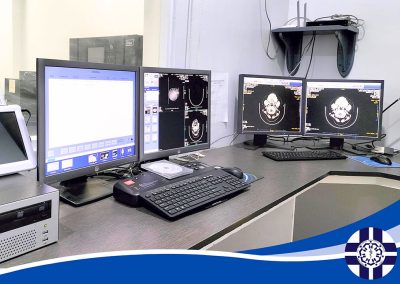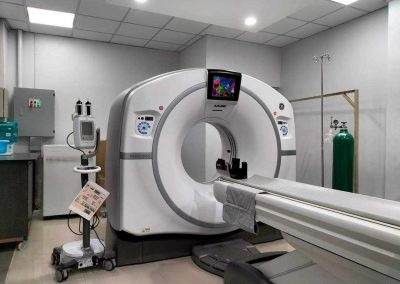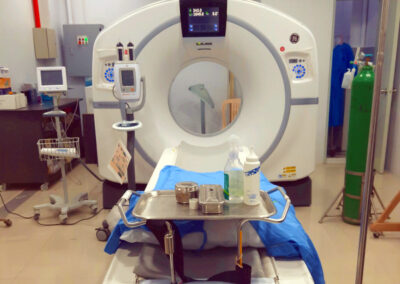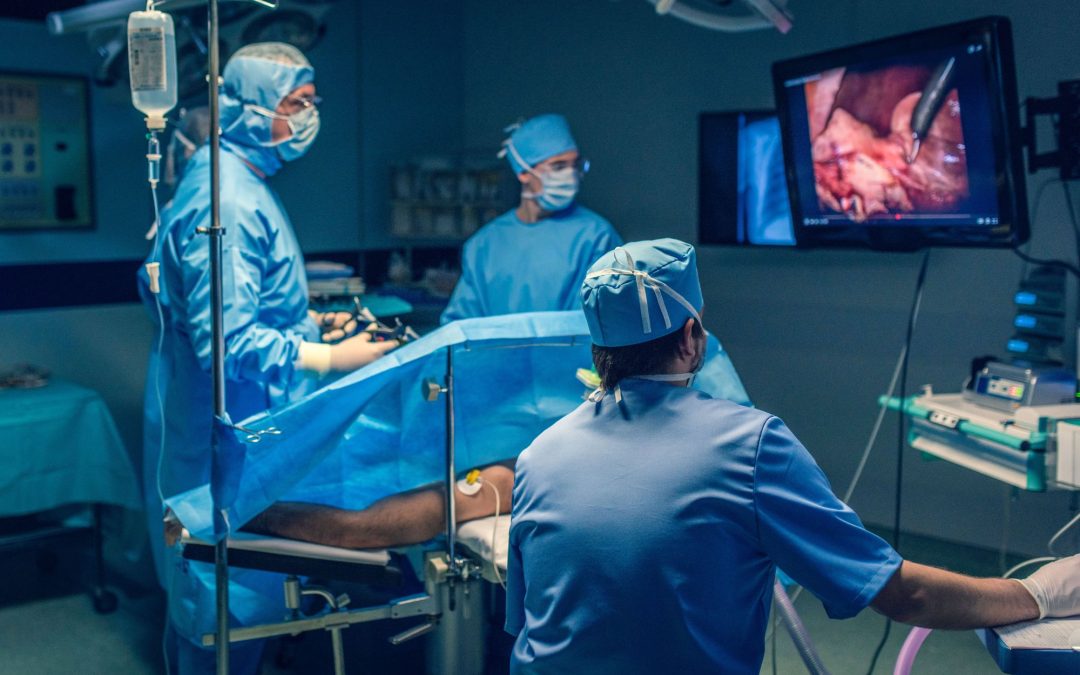What is a CT scan?
Computed tomography is commonly referred to as a CT scan. A CT scan is a diagnostic imaging procedure that uses a combination of X-rays and computer technology to produce images of the inside of the body. It shows detailed images of any part of the body, including the bones, muscles, fat, organs and blood vessels.
CT scans are more detailed than standard X-rays. In standard X-rays, a beam of energy is aimed at the body part being studied. A plate behind the body part captures the variations of the energy beam after it passes through skin, bone, muscle and other tissue. While much information can be obtained from a regular X-ray, a lot of detail about internal organs and other structures is not available.
CT scans may be performed to help diagnose tumors, investigate internal bleeding, or check for other internal injuries or damage. CT can also be used for a tissue or fluid biopsy.
Why are CT scans sometimes ordered with contrast?
CT scans may be done with or without contrast. Contrast refers to a substance taken by mouth or injected into an IV line that causes the particular organ or tissue under study to be seen more clearly.
How do I prepare for a CT scan?
If you are having a computed tomography angiography (CTA) or a virtual colonoscopy, you will be given specific instructions when you make your appointment.
CLOTHING: You may be asked to change into a patient gown. a gown will be provided for you. Please remove all piercings and leave all jewelry and valuables at home.
ALLERGY: Please inform the access center representative when you schedule your scan if you have had an allergic reaction to any contrast media. IV contrast will not be administered if you have had a severe or anaphylactic reaction to any contrast media in the past.
EAT/DRINK: If your study was ordered without contrast, you can eat, drink and take your prescribed medications prior to your exam.
DIABETICS: People with diabetes should eat a light breakfast or lunch three hours prior to the scan time. Depending on your oral medication for diabetes, you may be asked to discontinue use of the medication for 48 hours after the CT examination.
What are the risks of a CT scan?
If you are pregnant or think you may be pregnant, you should notify your health care provider.
The amount of radiation dose used in a CT scan is small. You may want to ask your doctor about the amount of radiation used during the CT procedure and the risks related to your particular situation.
What happens during a CT scan?
CT scans may be performed on an outpatient basis or as part of your stay in a hospital. Procedures may vary depending on your condition and your physician’s practices. Generally, CT scans follow this process:
- You may be asked to change into a patient gown. If so, a gown will be provided for you. A locker will be provided to secure all personal belongings. Please remove all piercings and leave all jewelry and valuables at home.
- If you are to have a procedure done with contrast, an IV line will be started in the hand or arm for injection of the contrast media. For oral contrast, you will be given a liquid contrast preparation to swallow. In some situations, the contrast may be given rectally.
- You will lie on a scan table that slides into a large, circular opening of the scanning machine.
- The technologist will be in another room where the scanner controls are located. However, you will be in constant sight of the technologist through a window. Speakers inside the scanner will enable the technologist to communicate with and hear you. You may have a call button so that you can let the technologist know if you have any problems during the procedure. The technologist will be watching you at all times and will be in constant communication.
- As the scanner begins to rotate around you, X-rays will pass through the body for short amounts of time. You will hear clicking sounds, which are normal.
- The X-rays absorbed by the body’s tissues will be detected by the scanner and transmitted to the computer. The computer will transform the information into an image to be interpreted by the radiologist.
- It is important that you remain very still during the procedure. You may be asked to hold your breath at various times during the procedure.
- If contrast media is used for your procedure, you may feel some effects when the contrast is injected into the IV line. These effects include a flushing sensation, a salty or metallic taste in the mouth, a brief headache, or nausea and/or vomiting. These effects usually last for a few moments.
- You should notify the technologist if you have any breathing difficulties, sweating, numbness or heart palpitations.
- When the procedure has been completed, you will be removed from the scanner.
- If an IV line was inserted for contrast administration, the line will be removed.
- While the CT procedure itself causes no pain, having to lie still for the length of the procedure might cause some discomfort or pain, particularly in the case of a recent injury or invasive procedure, such as surgery. The technologist will use all possible comfort measures and complete the procedure as quickly as possible to minimize any discomfort or pain.
Check out our CT SCAN Services.






